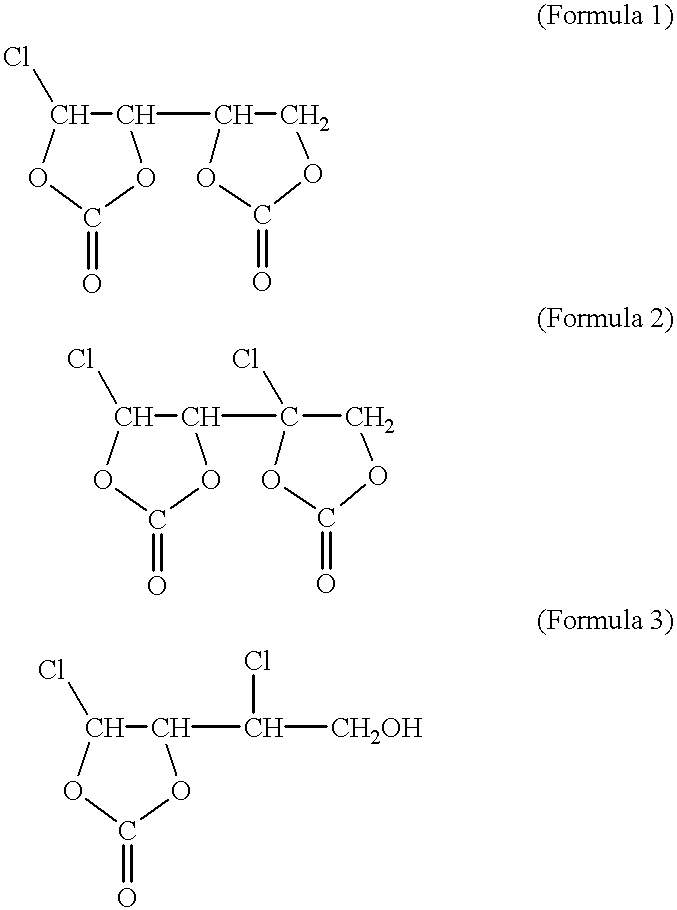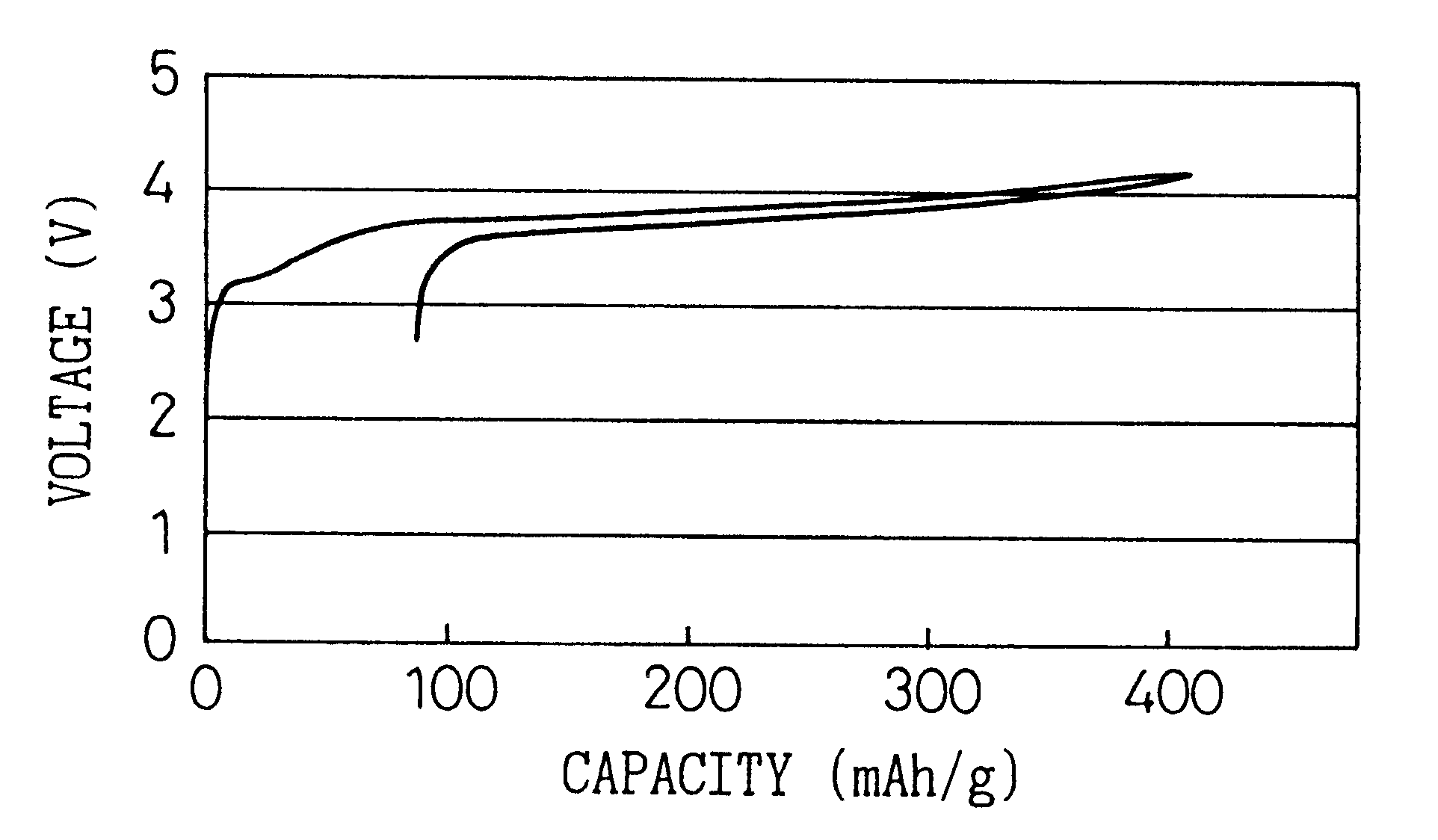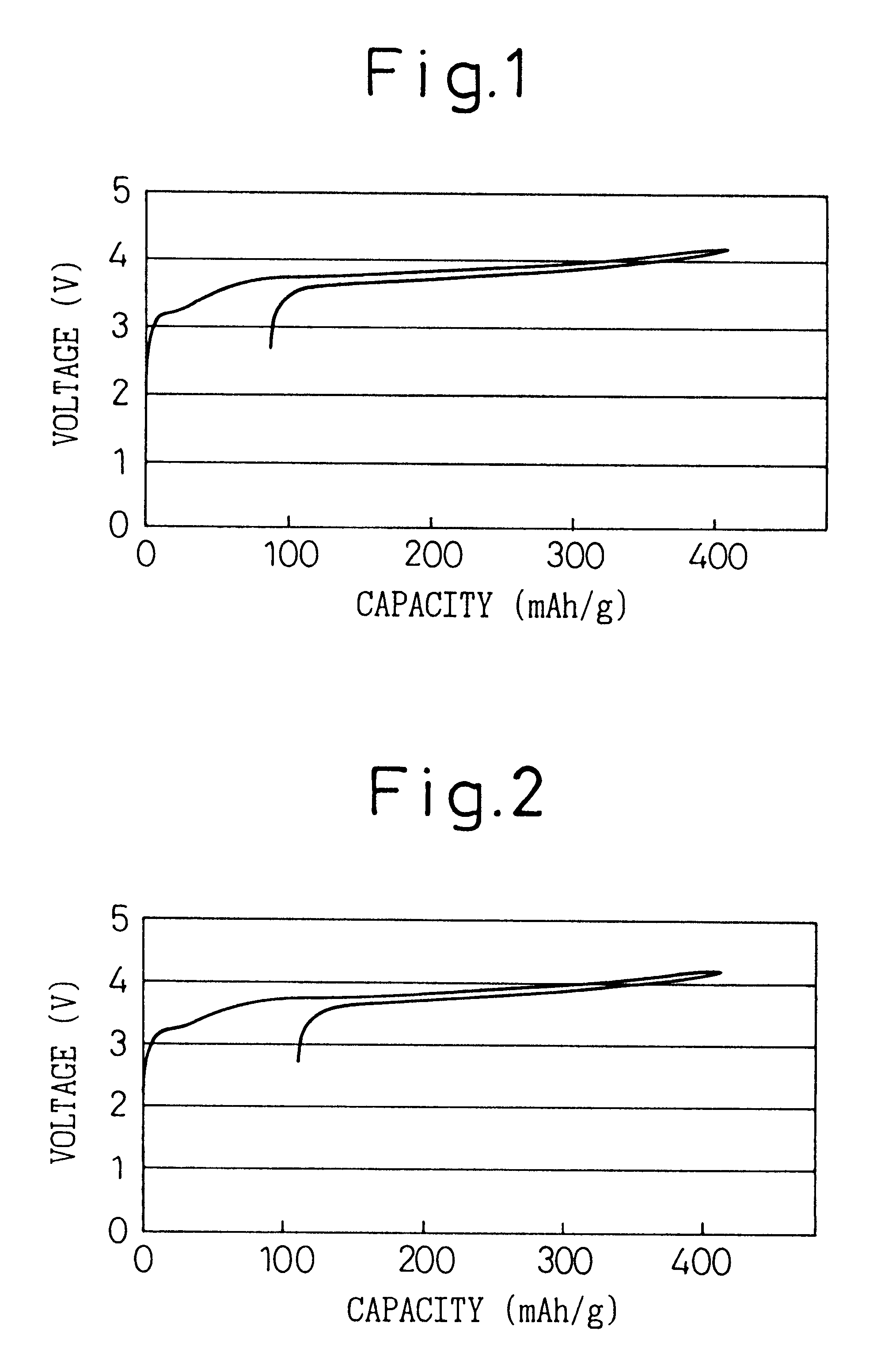Non-aqueous electrolyte and lithium secondary battery using the same
a technology of non-aqueous electrolyte and lithium secondary battery, which is applied in the direction of non-aqueous electrolyte cells, cell components, electrochemical generators, etc., can solve the problems of battery characteristics deterioration and lack of reproducible data, and achieve the effect of satisfying battery characteristics
- Summary
- Abstract
- Description
- Claims
- Application Information
AI Technical Summary
Benefits of technology
Problems solved by technology
Method used
Image
Examples
example 1
Preparation of Electrolyte
A non-aqueous solvent was prepared by adding 2% by weight of the high purity VC to a mixed solvent of PC and DMC of a volume ratio of 1:2. LiPF.sub.6 was dissolved in this to a concentration of 1M to prepare the electrolyte.
Preparation of Lithium Secondary Battery and Measurement of Battery Characteristics
80% by weight of LiCoO.sub.2 (cathode active material), 10% by weight of acetylene black (conductive agent), and 10% by weight of polyvinylidene fluoride (binder) were mixed and diluted by N-methylpyrrolidone to prepare a cathode paste. The paste was coated on an aluminum foil collector, dried, and compression molded to form the cathode. On the other hand, 90% by weight of natural graphite (d.sub.002 =0.3354) and 10% by weight of polyvinylidene fluoride (binder) were mixed and diluted by N-methylpyrrolidone to prepare an anode paste. This paste was coated on a copper foil collector, dried, and compression molded to form the anode. The ratio of the cathode ...
example 2
The same procedure was followed as in Example 1 except instead of the mixed solvent of a volume ratio 1:2 of PC and DMC, a mixed solvent of EC and DMC having a volume ratio of 1:1 was used, to prepare a battery and a charge-discharge test conducted. FIG. 4 shows the initial charge-discharge curve.
example 3
The same procedure was followed as in Example 1 except that, instead of the volume ratio of PC and DMC of 1:1, the volume ratio of PC, EC, and DMC was made 1:1:2, to prepare a battery and a charge-discharge test conducted.
The initial coulomb efficiencies of Examples 2 to 3 and Comparative Examples 4 to 6 are shown in Table 3. As clear from this Table, a good coulomb efficiency is obtained by use of high purity VC.
FIG. 7 is a view of cycle characteristics of Example 2 and Comparative Examples 4, 5 and 6 with the ordinate showing the discharge capacity (mAh) and with the abscissa showing the number of cycles.
As will be understood from FIG. 7, compared with Comparative Example 4 using no VC, Comparative Example 5 using Aldrich VC, and Comparative Example 6 using conventional synthesis method VC, a good cycle characteristics were maintained in Example 2 using high purity VC.
FIG. 8 shows the cycle characteristics of Example 3 with the ordinate showing the discharge capacity. (mAh) and th...
PUM
| Property | Measurement | Unit |
|---|---|---|
| boiling point | aaaaa | aaaaa |
| lattice spacing | aaaaa | aaaaa |
| boiling point | aaaaa | aaaaa |
Abstract
Description
Claims
Application Information
 Login to View More
Login to View More - R&D
- Intellectual Property
- Life Sciences
- Materials
- Tech Scout
- Unparalleled Data Quality
- Higher Quality Content
- 60% Fewer Hallucinations
Browse by: Latest US Patents, China's latest patents, Technical Efficacy Thesaurus, Application Domain, Technology Topic, Popular Technical Reports.
© 2025 PatSnap. All rights reserved.Legal|Privacy policy|Modern Slavery Act Transparency Statement|Sitemap|About US| Contact US: help@patsnap.com



